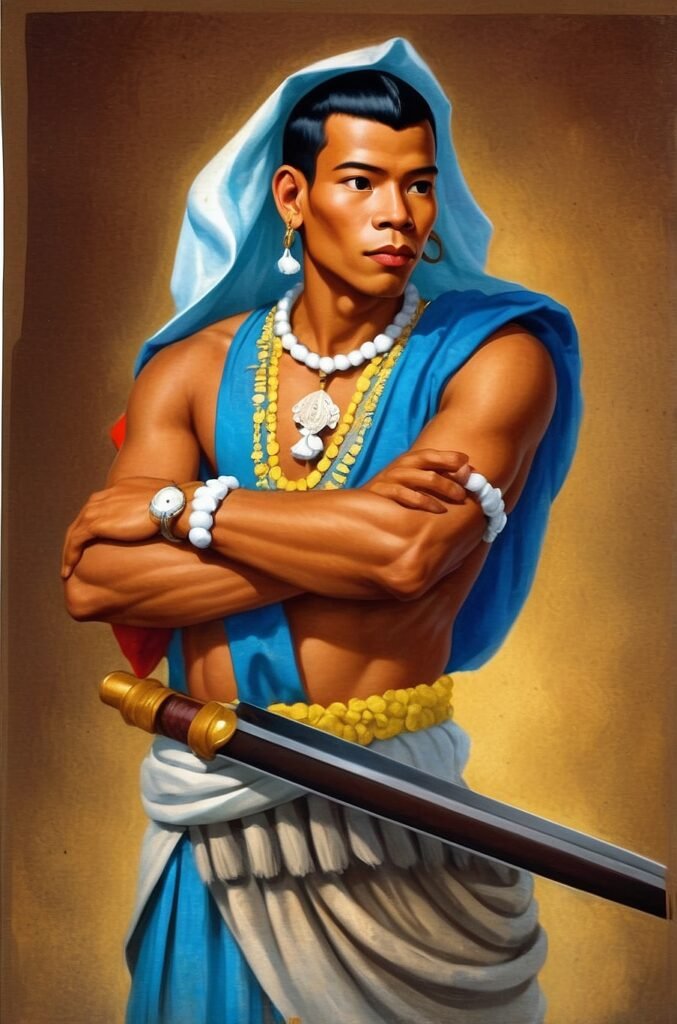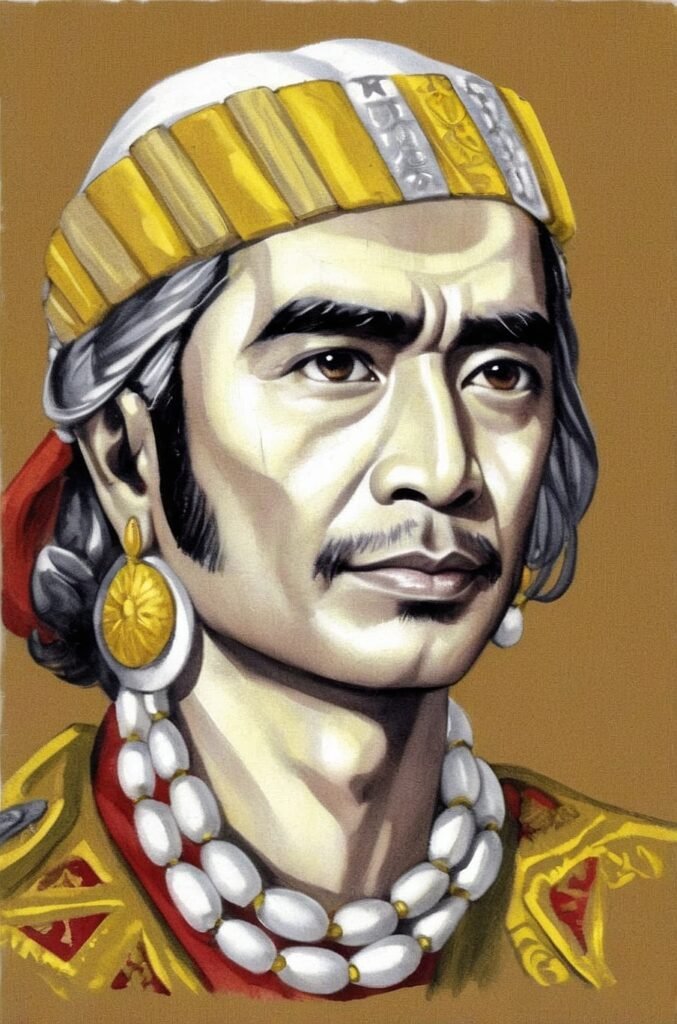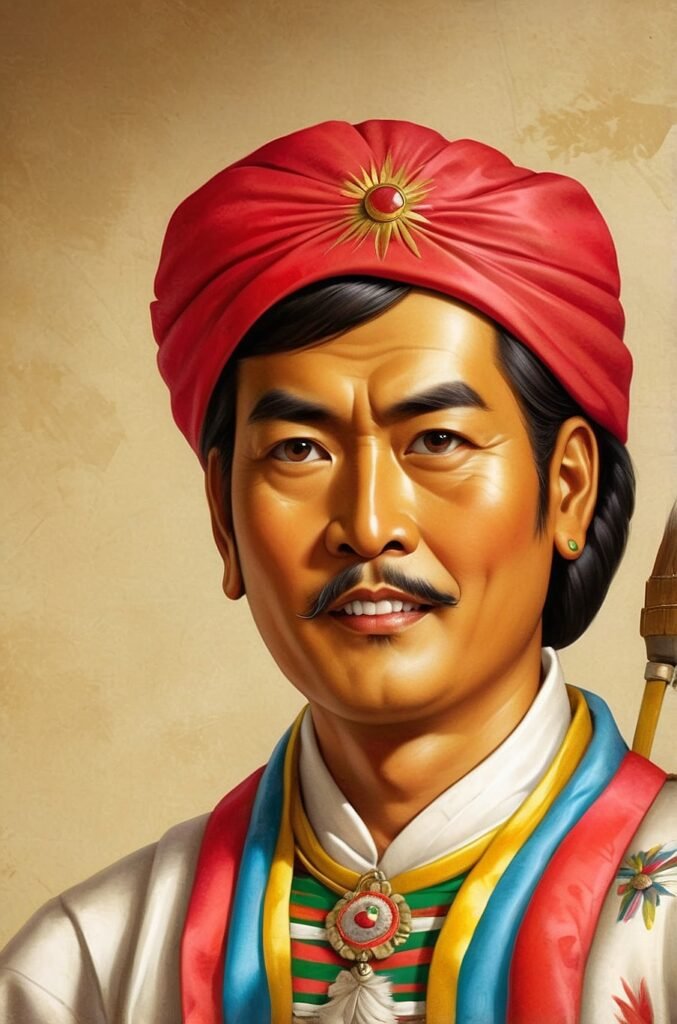Lakandula, also known as Gat Lakan Dula or Banaw Lakandula, was a prominent Filipino ruler who played a significant role in the early Spanish colonial period of the Philippines. As the Lakan (paramount ruler) of Tondo, a prosperous pre-colonial polity located in present-day Manila, Lakandula’s actions and decisions during the arrival of the Spanish conquistadors had far-reaching consequences for the future of the archipelago. This blog post will delve into the life, reign, and legacy of Lakandula, exploring his alliance with the Spanish and its impact on Philippine history.
The Pre-Colonial Kingdom of Tondo
Geographic and Political Landscape
Tondo was a thriving maritime kingdom situated on the northern shores of Manila Bay, in what is now part of Metro Manila. Its strategic location made it a hub for trade and commerce in the region. The kingdom of Tondo was part of a complex network of polities and chiefdoms that existed in pre-colonial Philippines, characterized by a hierarchical social structure and a vibrant cultural tradition.
Economic Significance
Tondo’s economy was primarily based on agriculture and maritime trade. The kingdom was known for its production of rice, cotton, and other agricultural products. Its port served as a vital link in the extensive trade networks that connected the Philippine archipelago with other parts of Southeast Asia, China, and beyond.
Social and Political Structure
The social hierarchy in Tondo, like many pre-colonial Filipino societies, was composed of several classes:
- Maginoo (nobility)
- Timawa (warrior class)
- Maharlika (lower nobility)
- Alipin (dependent class)
At the apex of this structure was the Lakan, the paramount ruler who held significant political and economic power.
Lakandula’s Rise to Power
Lineage and Heritage
Lakandula was born into the ruling class of Tondo, belonging to a long line of chiefs who had governed the kingdom for generations. His exact birth date is unknown, but it is believed to be in the late 15th or early 16th century. Lakandula’s royal lineage granted him the title of “Gat,” an honorific reserved for the highest-ranking nobility.
Ascension to the Throne
The details of Lakandula’s ascension to the position of Lakan are not well-documented in historical records. However, it is generally accepted that he assumed the role through hereditary succession, as was customary in pre-colonial Filipino societies. As Lakan, Lakandula would have been responsible for maintaining political alliances, overseeing trade relations, and ensuring the prosperity and security of Tondo.
Reign and Influence
During his reign, Lakandula likely continued the policies of his predecessors, focusing on:
- Strengthening trade relationships with neighboring polities
- Maintaining the internal stability of Tondo
- Upholding traditional social and cultural practices
- Defending the kingdom’s interests against potential threats
Lakandula’s influence extended beyond the borders of Tondo, as he was recognized as a powerful figure in the region, with alliances and kinship ties to other local rulers.
The Arrival of the Spanish
First Contact
The arrival of the Spanish expedition led by Miguel López de Legazpi in 1565 marked a turning point in Philippine history. While Legazpi initially established a settlement in Cebu, his forces eventually made their way to Luzon in 1570. It was during this time that Lakandula and other local rulers first encountered the Spanish conquistadors.
Initial Reactions
The arrival of the Spanish was met with a mix of curiosity, caution, and resistance among the various polities of Luzon. Some rulers, like Rajah Sulayman of Manila, initially opposed the Spanish presence. Lakandula, however, took a more diplomatic approach, recognizing the potential advantages and risks of engaging with the newcomers.
Lakandula’s Alliance with the Spanish
Motivations for Alliance
Lakandula’s decision to ally with the Spanish was likely influenced by several factors:
- Recognition of Spanish military superiority
- Desire to maintain Tondo’s political and economic status
- Opportunity to gain an advantage over rival polities
- Potential access to new trade opportunities and technologies
Terms of the Alliance
The alliance between Lakandula and the Spanish was formalized through a blood compact, a traditional Filipino ritual symbolizing friendship and mutual obligation. The specific terms of the alliance included:
- Recognition of Spanish sovereignty
- Conversion to Christianity
- Payment of tribute
- Military assistance to the Spanish
In return, Lakandula was promised:
- Retention of his noble status
- Protection from enemies
- Certain privileges and exemptions
Immediate Consequences
Lakandula’s alliance with the Spanish had several immediate consequences:
- It provided the Spanish with a foothold in the Manila Bay area
- It legitimized Spanish presence in the eyes of some local populations
- It created divisions among the local rulers, weakening overall resistance to Spanish colonization
- It facilitated the spread of Christianity in the region
Impact on Spanish Colonization
Expansion of Spanish Control
Lakandula’s alliance played a crucial role in the Spanish colonization of Luzon. It provided the Spanish with:
- Local knowledge and guidance
- Access to resources and manpower
- A model for other local rulers to follow in submitting to Spanish authority
Establishment of Manila
With Lakandula’s support, the Spanish were able to establish Manila as the capital of their new colony in 1571. This marked the beginning of over three centuries of Spanish rule in the Philippines.
Pacification of Resistance
Lakandula’s influence was instrumental in pacifying resistance from other local rulers. His example of cooperation with the Spanish encouraged others to follow suit, reducing the overall cost and time required for the Spanish to consolidate their control over the region.
Lakandula’s Later Years
Continued Cooperation
Despite the challenges posed by Spanish colonization, Lakandula continued to cooperate with the new rulers. He played a role in:
- Mediating conflicts between the Spanish and other local leaders
- Providing military assistance in Spanish campaigns
- Facilitating the conversion of his subjects to Christianity
Maintenance of Status
While the nature of his rule changed under Spanish colonization, Lakandula was able to maintain a significant degree of his former status and influence. The Spanish recognized him as a “Don,” a title of nobility, and he retained control over certain lands and people.
Legacy and Descendants
Lakandula’s descendants continued to play important roles in colonial society, with many holding positions of influence in the Spanish administration. The Lakandula clan remained a prominent family throughout the colonial period and beyond.
Historical Evaluation of Lakandula’s Actions
Perspectives on Collaboration
Lakandula’s decision to ally with the Spanish has been the subject of historical debate:
| Perspective | Arguments |
|---|---|
| Pragmatic Leadership | – Recognized inevitability of Spanish conquest – Sought to protect his people’s interests – Maintained some degree of autonomy |
| Betrayal of Filipino Interests | – Facilitated foreign domination – Prioritized personal power over independence – Set precedent for collaboration with colonizers |
| Complex Historical Figure | – Acted within constraints of his time – Made difficult choices in face of superior force – Neither hero nor villain, but a product of circumstances |
Long-term Consequences
The long-term consequences of Lakandula’s alliance with the Spanish include:
- Acceleration of Spanish colonization process
- Preservation of some pre-colonial social structures within the colonial system
- Influence on the development of Filipino elite collaborator class
- Contribution to the complex cultural synthesis that characterizes Filipino identity
Lakandula in Philippine Historiography
Early Spanish Accounts
Early Spanish chronicles, such as those by Antonio de Morga and Pedro Chirino, generally portrayed Lakandula in a positive light, emphasizing his cooperation and loyalty to the Spanish crown.
Nationalist Interpretations
In the late 19th and early 20th centuries, Filipino nationalist historians often viewed Lakandula’s actions critically, seeing them as a form of capitulation to foreign invaders.
Modern Scholarship
Contemporary historians tend to take a more nuanced view of Lakandula, considering the complex political and social context in which he operated. There is a growing emphasis on understanding pre-colonial Filipino societies on their own terms, rather than solely through the lens of resistance or collaboration with colonizers.
Cultural Legacy
Commemoration
Lakandula’s name has been commemorated in various ways in the Philippines:
- Streets and schools named after him
- Inclusion in historical monuments and artworks
- Depiction in literature and popular media
Symbolism
Lakandula has come to symbolize different things to different groups:
- For some, a symbol of pragmatic leadership in times of crisis
- For others, a cautionary tale about the consequences of foreign alliances
- A reminder of the complex nature of Philippine history and identity
Conclusion
Lakandula, the Lakan of Tondo who allied with the Spanish, remains a complex and controversial figure in Philippine history. His decision to align with the Spanish conquistadors had profound and lasting impacts on the course of Philippine history, accelerating the process of colonization while also preserving certain elements of pre-colonial Filipino society within the new colonial order.
As we continue to study and interpret the actions of historical figures like Lakandula, it is crucial to consider the context in which they operated and the limited options available to them. The story of Lakandula serves as a reminder of the complexities of colonial encounters and the difficult choices faced by indigenous leaders in times of dramatic social and political change.
Understanding figures like Lakandula helps us gain a more nuanced perspective on the Philippine past, moving beyond simple narratives of heroes and villains to appreciate the intricate tapestry of human motivations, actions, and consequences that have shaped the nation’s history.
Disclaimer: This blog post is based on historical records and scholarly interpretations available at the time of writing. While every effort has been made to ensure accuracy, our understanding of historical events and figures is subject to ongoing research and revision. Readers are encouraged to consult primary sources and recent academic works for the most up-to-date information on Lakandula and the early Spanish colonial period in the Philippines. If you notice any inaccuracies, please report them so we can correct them promptly.




